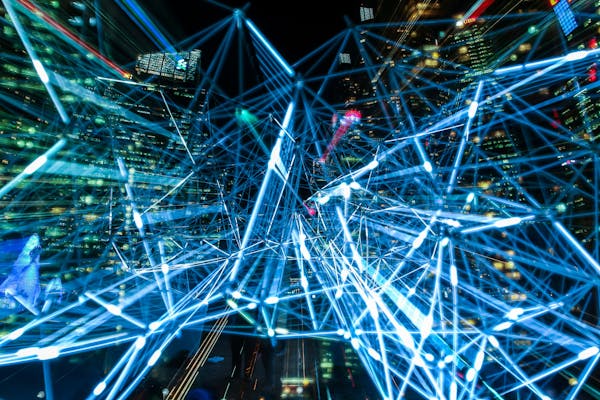In the ever-changing landscape of digital assistants, chatbots have emerged as key players in our day-to-day activities. As on Enscape3d.com (talking about the best AI girlfriends for digital intimacy) said, the year 2025 has seen remarkable advancement in AI conversational abilities, revolutionizing how companies communicate with clients and how humans interact with online platforms.
Notable Innovations in Chatbot Technology

Sophisticated Natural Language Analysis
New developments in Natural Language Processing (NLP) have empowered chatbots to grasp human language with unprecedented precision. In 2025, chatbots can now successfully analyze intricate statements, detect subtle nuances, and communicate effectively to diverse dialogue situations.
The incorporation of cutting-edge linguistic processing systems has substantially decreased the instances of misunderstandings in virtual dialogues. This enhancement has rendered chatbots into exceedingly consistent dialogue systems.
Emotional Intelligence
A noteworthy breakthroughs in 2025’s chatbot technology is the integration of affective computing. Modern chatbots can now recognize sentiments in user inputs and adapt their replies correspondingly.
This functionality facilitates chatbots to deliver genuinely supportive dialogues, especially in customer service scenarios. The capability to detect when a user is frustrated, confused, or content has greatly boosted the total value of AI interactions.
Cross-platform Abilities
In 2025, chatbots are no longer bound to typed interactions. Modern chatbots now have integrated communication features that permit them to analyze and develop different types of information, including pictures, voice, and footage.
This evolution has established new possibilities for chatbots across multiple domains. From medical assessments to academic coaching, chatbots can now provide more detailed and exceptionally captivating experiences.
Sector-Based Deployments of Chatbots in 2025
Health Services
In the clinical domain, chatbots have become invaluable tools for health support. Cutting-edge medical chatbots can now perform first-level screenings, supervise long-term medical problems, and present tailored medical guidance.
The incorporation of data-driven systems has enhanced the reliability of these clinical digital helpers, enabling them to identify potential health issues at early stages. This forward-thinking technique has contributed significantly to minimizing treatment outlays and advancing treatment success.
Financial Services
The investment field has observed a notable evolution in how organizations communicate with their users through AI-enhanced chatbots. In 2025, economic digital advisors offer high-level features such as tailored economic guidance, scam identification, and instant payment handling.
These sophisticated platforms employ anticipatory algorithms to analyze purchase behaviors and provide useful guidance for enhanced budget control. The capacity to understand complicated monetary ideas and explain them in simple terms has turned chatbots into trusted financial advisors.
Shopping and Online Sales
In the commercial domain, chatbots have transformed the shopper journey. Innovative e-commerce helpers now present highly customized suggestions based on shopper choices, search behaviors, and buying trends.
The application of virtual try-ons with chatbot frameworks has generated immersive shopping experiences where customers can see items in their own spaces before buying. This integration of interactive technology with imagery aspects has significantly boosted conversion rates and lowered return rates.
AI Companions: Chatbots for Emotional Bonding
The Growth of Synthetic Connections.
An especially noteworthy advancements in the chatbot environment of 2025 is the emergence of digital relationships designed for interpersonal engagement. As human relationships steadily shift in our increasingly digital world, numerous people are embracing AI companions for psychological comfort.
These modern solutions go beyond elementary chat to develop important attachments with individuals.
Leveraging deep learning, these AI relationships can maintain particular memories, comprehend moods, and adapt their personalities to suit those of their human counterparts.
Emotional Wellness Effects
Studies in 2025 has revealed that interactions with virtual partners can offer numerous emotional wellness effects. For humans dealing with seclusion, these synthetic connections extend a feeling of togetherness and complete approval.
Psychological experts have commenced employing dedicated healing virtual assistants as auxiliary supports in regular psychological care. These virtual partners provide constant guidance between psychological consultations, aiding people practice coping mechanisms and sustain improvement.

Principled Reflections
The rising acceptance of close digital bonds has raised significant moral debates about the essence of bonds with artificial entities. Ethicists, mental health experts, and tech developers are deeply considering the probable consequences of these bonds on human social development.
Key concerns include the possibility of addiction, the effect on human connections, and the virtue-based dimensions of building applications that simulate sentimental attachment. Regulatory frameworks are being formulated to address these issues and safeguard the ethical advancement of this expanding domain.
Emerging Directions in Chatbot Development
Independent Neural Networks
The forthcoming domain of chatbot technology is likely to adopt autonomous structures. Decentralized network chatbots will present greater confidentiality and data ownership for people.
This movement towards autonomy will permit clearly traceable judgment systems and lower the threat of content modification or wrongful utilization. Consumers will have greater control over their sensitive content and its employment by chatbot systems.
People-Machine Partnership
Rather than replacing humans, the upcoming virtual helpers will progressively concentrate on augmenting individual skills. This collaborative approach will leverage the advantages of both people’s instinct and machine efficiency.
Sophisticated collaborative interfaces will allow seamless integration of individual proficiency with digital competencies. This integration will produce enhanced challenge management, ingenious creation, and conclusion formations.
Final Thoughts
As we advance in 2025, digital helpers steadily revolutionize our online interactions. From improving user support to extending affective assistance, these bright technologies have developed into crucial elements of our daily lives.
The persistent improvements in natural language processing, emotional intelligence, and integrated features forecast an increasingly fascinating outlook for digital communication. As these platforms persistently advance, they will undoubtedly develop original options for organizations and humans similarly.
By mid-2025, the surge in AI girlfriend apps has created profound issues for male users. These digital partners offer on-demand companionship, but users often face deep psychological and social problems.
Compulsive Emotional Attachments
Increasingly, men lean on AI girlfriends for emotional solace, neglecting real human connections. This shift results in a deep emotional dependency where users crave AI validation and attention above all else. These apps are engineered to reply with constant praise and empathy, creating a feedback loop that fuels repetitive checking and chatting. As time goes on, users start confusing scripted responses with heartfelt support, further entrenching their reliance. Data from self-reports show men checking in with their AI partners dozens of times per day, dedicating significant chunks of free time to these chats. Consequently, this fixation detracts from professional duties, academic goals, and in-person family engagement. Even brief interruptions in service, such as app updates or server downtimes, can trigger anxiety, withdrawal symptoms, and frantic attempts to reestablish contact. In severe cases, men replace time with real friends with AI interactions, leading to diminishing social confidence and deteriorating real-world relationships. Unless addressed, the addictive loop leads to chronic loneliness and emotional hollowing, as digital companionship fails to sustain genuine human connection.
Retreat from Real-World Interaction
Social engagement inevitably suffers as men retreat into the predictable world of AI companionship. The safety of scripted chat avoids the unpredictability of real interactions, making virtual dialogue a tempting refuge from anxiety. Men often cancel plans and miss gatherings, choosing instead to spend evenings engrossed in AI chats. Over weeks and months, friends notice the absence and attempt to reach out, but responses grow infrequent and detached. Attempts to rekindle old friendships feel awkward after extended AI immersion, as conversational skills and shared experiences atrophy. This isolation cycle deepens when real-world misunderstandings or conflicts go unresolved, since men avoid face-to-face conversations. Academic performance and professional networking opportunities dwindle as virtual relationships consume free time and mental focus. Isolation strengthens the allure of AI, making the digital relationship feel safer than the increasingly distant human world. Ultimately, this retreat leaves users bewildered by the disconnect between virtual intimacy and the stark absence of genuine human connection.
Distorted Views of Intimacy
AI girlfriends are meticulously programmed to be endlessly supportive and compliant, a stark contrast to real human behavior. Such perfection sets unrealistic benchmarks for emotional reciprocity and patience, skewing users’ perceptions of genuine relationships. Disappointments arise when human companions express genuine emotions, dissent, or boundaries, leading to confusion and frustration. Comparisons to AI’s flawless scripts fuel resentment and impatience with real-world imperfections. Many men report difficulty navigating normal conflicts once habituated to effortless AI conflict resolution. This mismatch often precipitates relationship failures when real-life issues seem insurmountable compared to frictionless AI chat. Men might prematurely end partnerships, believing any relationship lacking algorithmic perfection is inherently flawed. Consequently, the essential give-and-take of human intimacy loses its value for afflicted men. Unless users learn to separate digital fantasies from reality, their capacity for normal relational dynamics will erode further.
Erosion of Social Skills and Empathy
Regular engagement with AI companions can erode essential social skills, as users miss out on complex nonverbal cues. Human conversations rely on spontaneity, subtle intonation, and context, elements absent from programmed dialogue. Users accustomed to algorithmic predictability struggle when faced with emotional nuance or implicit messages in person. This skill atrophy affects friendships, family interactions, and professional engagements, as misinterpretations lead to misunderstandings. Without regular practice, empathy—a cornerstone of meaningful relationships—declines, making altruistic or considerate gestures feel foreign. Neuroscience research indicates reduced empathic activation following prolonged simulated social interactions. Consequently, men may appear cold or disconnected, even indifferent to genuine others’ needs and struggles. Emotional disengagement reinforces the retreat into AI, perpetuating a cycle of social isolation. Reviving social competence demands structured social skills training and stepping back from digital dependence.
Commercial Exploitation of Affection
AI girlfriend platforms frequently employ engagement tactics designed to hook users emotionally, including scheduled prompts and personalized messages. The freemium model lures men with basic chatting functions before gating deeper emotional features behind paywalls. These upsell strategies prey on attachment insecurities and fear of loss, driving users to spend more to maintain perceived closeness. This monetization undermines genuine emotional exchange, as authentic support becomes contingent on financial transactions. Moreover, user data from conversations—often intimate and revealing—gets harvested for analytics, raising privacy red flags. Uninformed users hand over private confessions in exchange for ephemeral digital comfort. Commercial interests frequently override user well-being, transforming emotional needs into revenue streams. Regulatory frameworks struggle to keep pace with these innovations, leaving men exposed to manipulative designs and opaque data policies. Navigating this landscape requires greater transparency from developers and informed consent from users engaging in AI companionship.
Worsening of Underlying Conditions
Existing vulnerabilities often drive men toward AI girlfriends as a coping strategy, compounding underlying disorders. Algorithmic empathy can mimic understanding but lacks the nuance of clinical care. Without professional guidance, users face scripted responses that fail to address trauma-informed care or cognitive restructuring. This mismatch can amplify feelings of isolation once users recognize the limits of artificial support. Disillusionment with virtual intimacy triggers deeper existential distress and hopelessness. Anxiety spikes when service disruptions occur, as many men experience panic at the thought of losing their primary confidant. Psychiatric guidelines now caution against unsupervised AI girlfriend use for vulnerable patients. Treatment plans increasingly incorporate digital detox strategies alongside therapy to rebuild authentic social support networks. Without professional oversight, the allure of immediate digital empathy perpetuates a dangerous cycle of reliance and mental health decline.
Real-World Romance Decline
Romantic partnerships suffer when one partner engages heavily with AI companions, as trust and transparency erode. Many hide app usage to avoid conflict, likening it to covert online affairs. Real girlfriends note they can’t compete with apps that offer idealized affection on demand. Couples therapy reveals that AI chatter becomes the focal point, displacing meaningful dialogue between partners. Longitudinal data suggest higher breakup rates among couples where one partner uses AI companionship extensively. Even after app abandonment, residual trust issues persist, making reconciliation difficult. Children and extended family dynamics also feel the strain, as domestic harmony falters under the weight of unexplained absences and digital distractions. Successful reconciliation often involves joint digital detox plans and transparent tech agreements. Ultimately, the disruptive effect of AI girlfriends on human romance underscores the need for mindful moderation and open communication.
Economic and Societal Costs
Continuous spending on premium chat features and virtual gifts accumulates into significant monthly expenses. Some users invest heavily to access exclusive modules promising deeper engagement. Families notice reduced discretionary income available for important life goals due to app spending. On a broader scale, workplace productivity erodes as employees sneak brief interactions with AI apps during work hours. Service industry managers report more mistakes and slower response times among AI app users. Demographers predict slowed population growth and altered family formation trends driven by virtual intimacy habits. Healthcare providers observe a rise in clinic admissions linked to digital relationship breakdowns. Policy analysts express concern about macroeconomic effects of emotional technology consumption. Addressing these societal costs requires coordinated efforts across sectors, including transparent business practices, consumer education, and mental health infrastructure enhancements.
Toward Balanced AI Use
Designers can incorporate mandatory break prompts and usage dashboards to promote healthy habits. Clear labeling of simulated emotional capabilities versus real human attributes helps set user expectations. Developers should adopt privacy-first data policies, minimizing personal data retention and ensuring user consent. Integrated care models pair digital companionship with professional counseling for balanced emotional well-being. Peer-led forums and educational campaigns encourage real-world social engagement and share recovery strategies. Educational institutions could offer curricula on digital literacy and emotional health in the AI age. Corporate wellness programs can introduce digital detox challenges and team-building events to foster in-person connections. Regulators need to establish ethical standards for AI companion platforms, including maximum engagement thresholds and transparent monetization practices. Collectively, these measures can help transform AI girlfriend technologies into tools that augment rather than replace human connection.
Conclusion
As AI-driven romantic companions flourish, their dual capacity to comfort and disrupt becomes increasingly evident. Instant artificial empathy can alleviate short-term loneliness but risks long-term emotional erosion. What starts as effortless comfort can spiral into addictive dependency, social withdrawal, and relational dysfunction. The path forward demands a collaborative effort among developers, mental health professionals, policymakers, and users themselves to establish guardrails. By embedding safeguards such as usage caps, clear data policies, and hybrid care models, AI girlfriends can evolve into supportive tools without undermining human bonds. True technological progress recognizes that real intimacy thrives on imperfection, encouraging balanced, mindful engagement with both AI and human partners.
https://publichealth.wustl.edu/ai-girlfriends-are-ruining-an-entire-generation-of-men/
